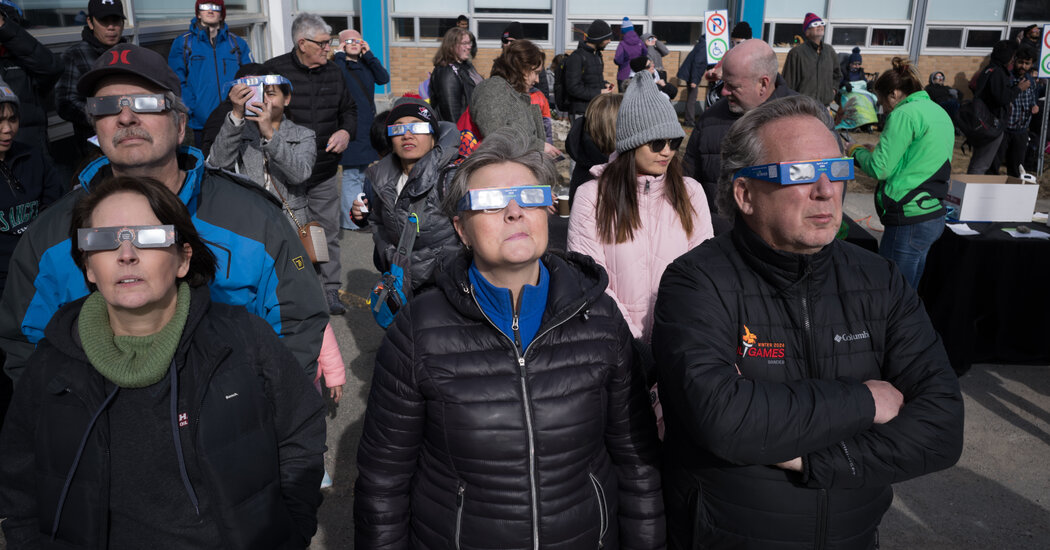Anticipating the Upcoming Solar Eclipse
Another celestial event is on the horizon! On Saturday, the moon will glide into position, casting its shadow on Earth’s surface. This captivating phenomenon will be visible to residents in various parts of the United States, Canada, the Caribbean, Europe, Russia, and Africa, where they will experience a partial solar eclipse. While it may not rival the breathtaking total solar eclipse that swept across the United States last year, it still offers a fantastic opportunity to pause from our daily routines and reflect on our place within the vast solar system.
During the eclipse, observers will notice the moon seemingly take a bite out of the sun, though the extent of this ‘bite’ will vary based on one’s geographical location. However, it’s essential to keep in mind that cloudy skies can hinder visibility.
It’s important to mention that the surface of the sun will never be entirely obscured during this event. Therefore, it is crucial to protect your eyes by wearing proper solar viewing glasses when observing the partial solar eclipse.
When is the Solar Eclipse?
The experience of the solar eclipse will differ significantly depending on where you are situated. The amount of the sun that will be obscured and the exact timing of the event will vary based on your location. As always, it is advisable to check your local weather forecast to determine whether you will have clear skies or cloudy conditions on the day of the event.
For those in North America, the eclipse will commence early in the morning, coinciding with sunrise. In fact, for many observers, the sun will already be partially eclipsed when it first rises above the horizon.
Saturday’s eclipse will be visible throughout the Northern Hemisphere, encompassing a broad region that stretches across both sides of the Atlantic Ocean. Unlike a total eclipse, which has a narrow path of totality, this partial eclipse will affect a larger area, providing a unique experience for many.




